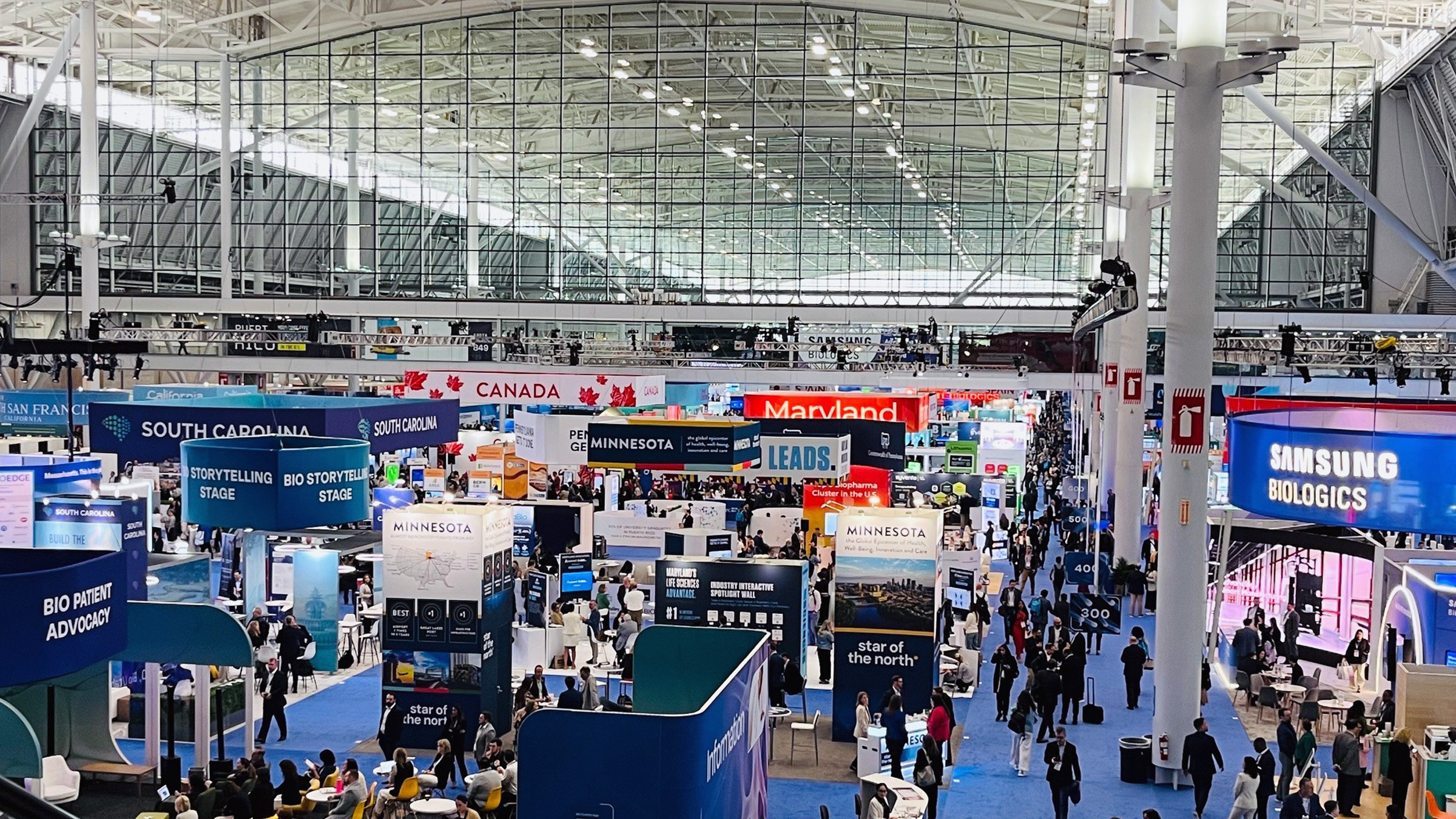Reflections from Bio25: Design’s Expanding Role in Biotech Innovation
I recently represented PDR at Bio25 in Boston, a leading biotechnology event with more than 20,000 attendees from over 70 countries. As Director at PDR, I’ve worked globally across biotech, life sciences, medical devices, healthcare, and pharmaceutical innovation for many years. While we’ve attended before, this year stood out for several reasons worth sharing.
Precision Psychiatry and Personalised Mental Health
There was a noticeable emphasis on cutting-edge innovation across biotech verticals, with precision psychiatry and mental health taking centre stage. The drive toward more personalised care—something I’ve written about numerous times—was particularly strong, with sessions exploring data-driven, genetically informed, and neuro-marker‑based psychiatric treatments.
AI Everywhere—From Molecules to Interfaces
Inevitably, AI was a common theme. It seems there are few conversations these days without those two letters appearing somewhere. From drug discovery and diagnostics to digital biomarkers and clinical trials, AI is reshaping the entire lifecycle of drug development. For those of us in design, this opens up exciting opportunities in UX, data visualization, and systems thinking—areas where we’ve been deeply involved.
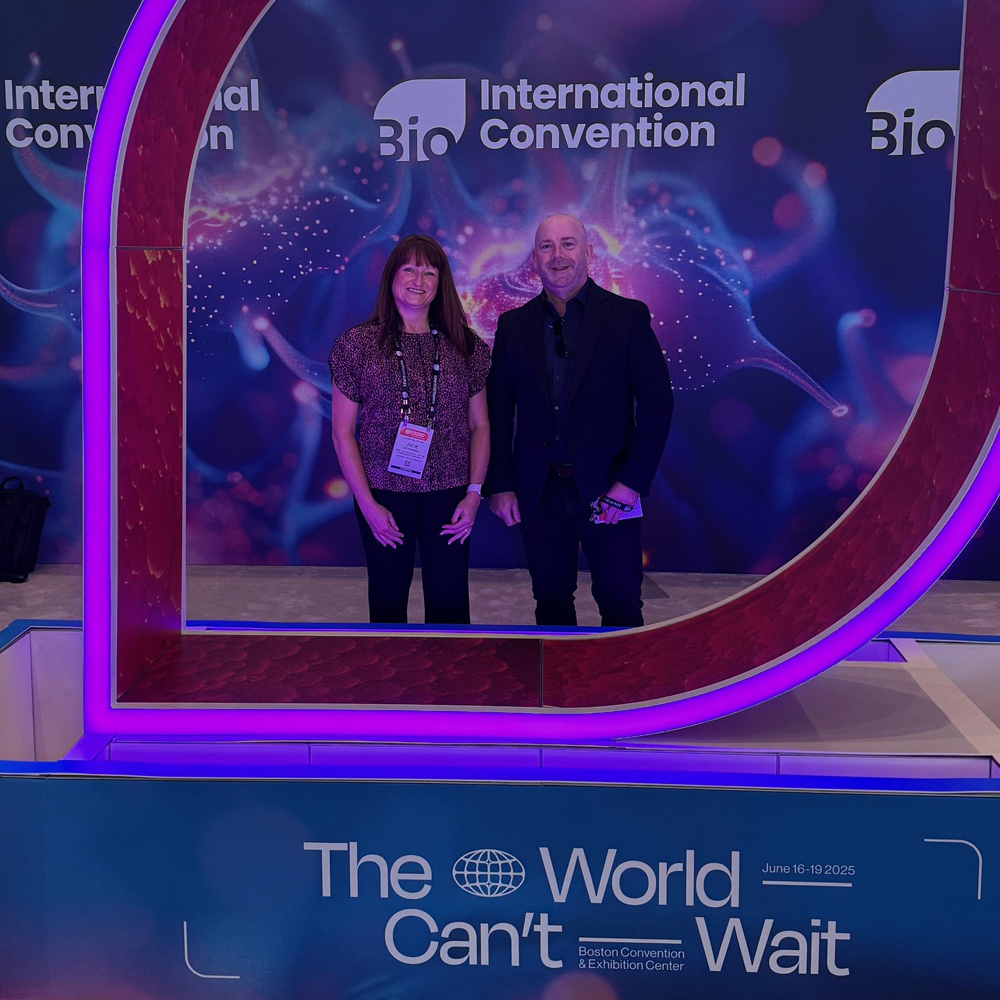
Complexity Calls for Human-Centred Design
There was continued major coverage of cell and gene therapies, genomics, nanotech, and biologics manufacturing. The complexity of these technologies—their technical outcomes, intricate processes, and sometimes unusual therapeutic effects—strongly pointed, for me, to the need for a robust user-centric design approach. This applies across all stakeholders involved in design, production, implementation, and adoption.
Storytelling Finds Its Stage
For the first time, Bio25 introduced a “Storytelling Stage”. Numerous talks and discussions emphasized the value of an empathetic narrative in biotechnology—highlighting how personal journeys bring context, clarity, and emotional design to traditionally technical domains. I remain hopeful but in this often highly detached and scientific industry, human-centred storytelling and patient context are finally gaining a powerful voice.
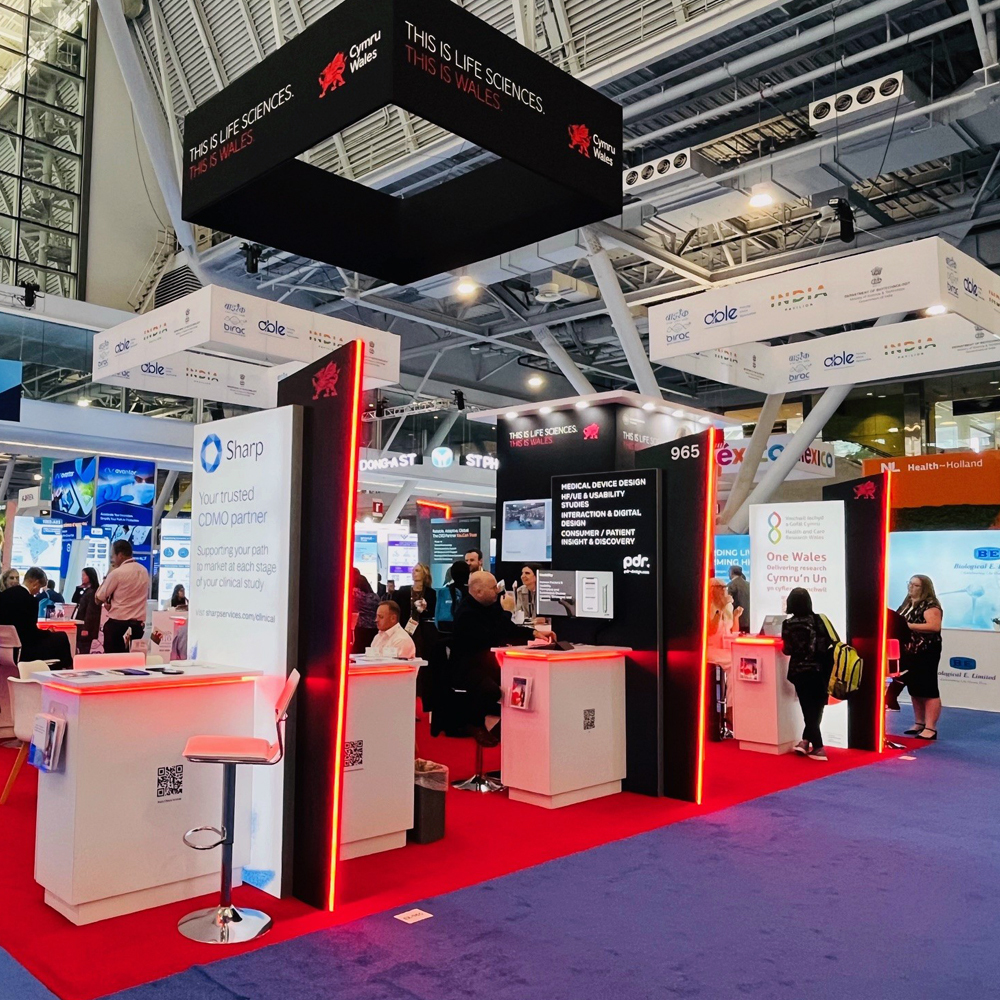
Health Equity and Inclusive Innovation
Health equity & under‑served populations was also a welcome theme across many companies and conference sessions. In particular, the spotlight on challenges in women’s health was especially encouraging—and one we’ve explored for some time through projects like Me.
Equally, ethics-forward designs that centres women, minorities, and underserved groups was stressed by several speakers as no longer optional, but essential—for both clinical efficacy and market impact.
Navigating Regulatory Shifts Through Design
One of the advantages of Bio25 is how it contributes to the broader learning puzzle around market and regulatory conditions. Shifts in U.S. biotech policy—such as priority review pathways and the FDA’s evolution under Martin Makary—are already influencing design timelines and product strategies. Many speakers emphasised that understanding and designing for this dynamic landscape is now critical. A design-led perspective that anticipates regulatory bottlenecks—by enabling traceability, compliance, and user validation—is now a strategic advantage.
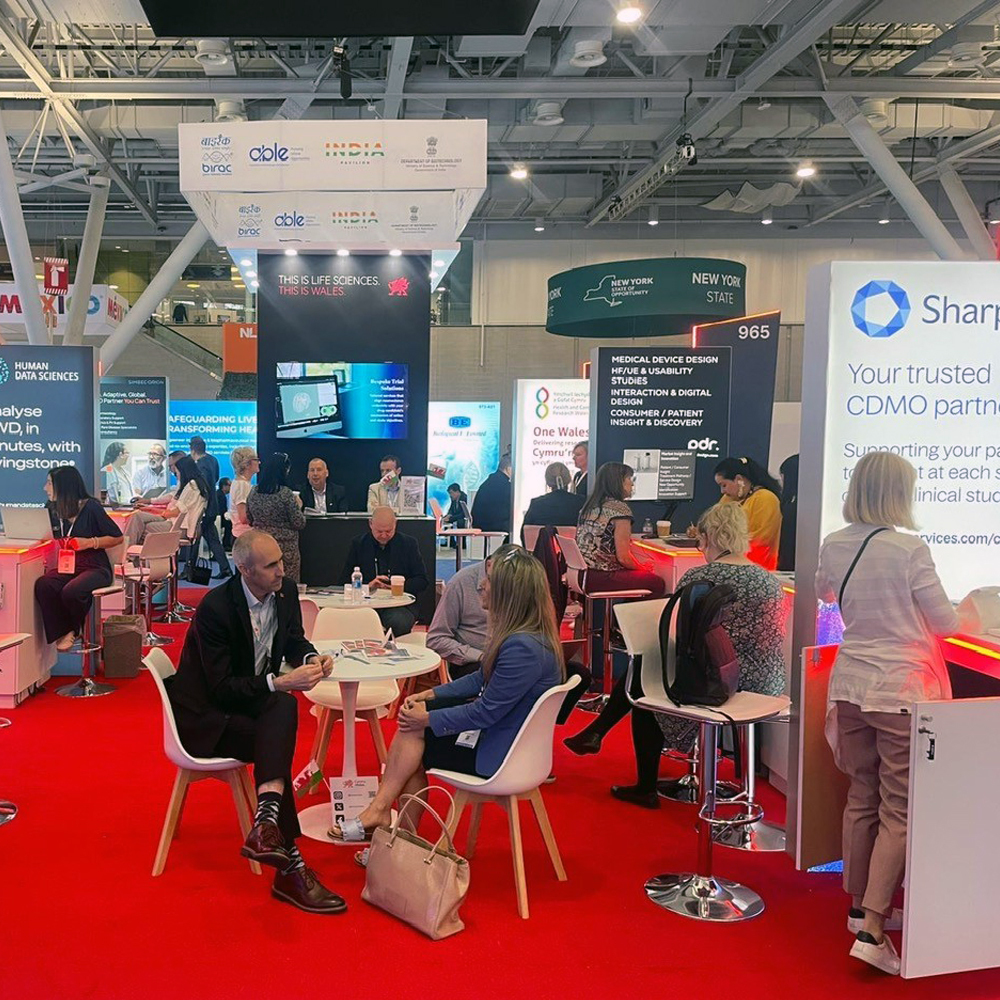
Where PDR Fits In
At PDR, we’ve spent years supporting innovation in this space—whether through patient insight, hardware and digital development, or helping to translate breakthrough technologies into real-world impact. A diverse mix of participants—from patient advocates to NGO leaders—underscored how biotech now demands broader stakeholder collaboration.
Good design teams are uniquely positioned to lead this kind of co-creation, grounded in empathy, lived experience, and a deep understanding of the patient voice.
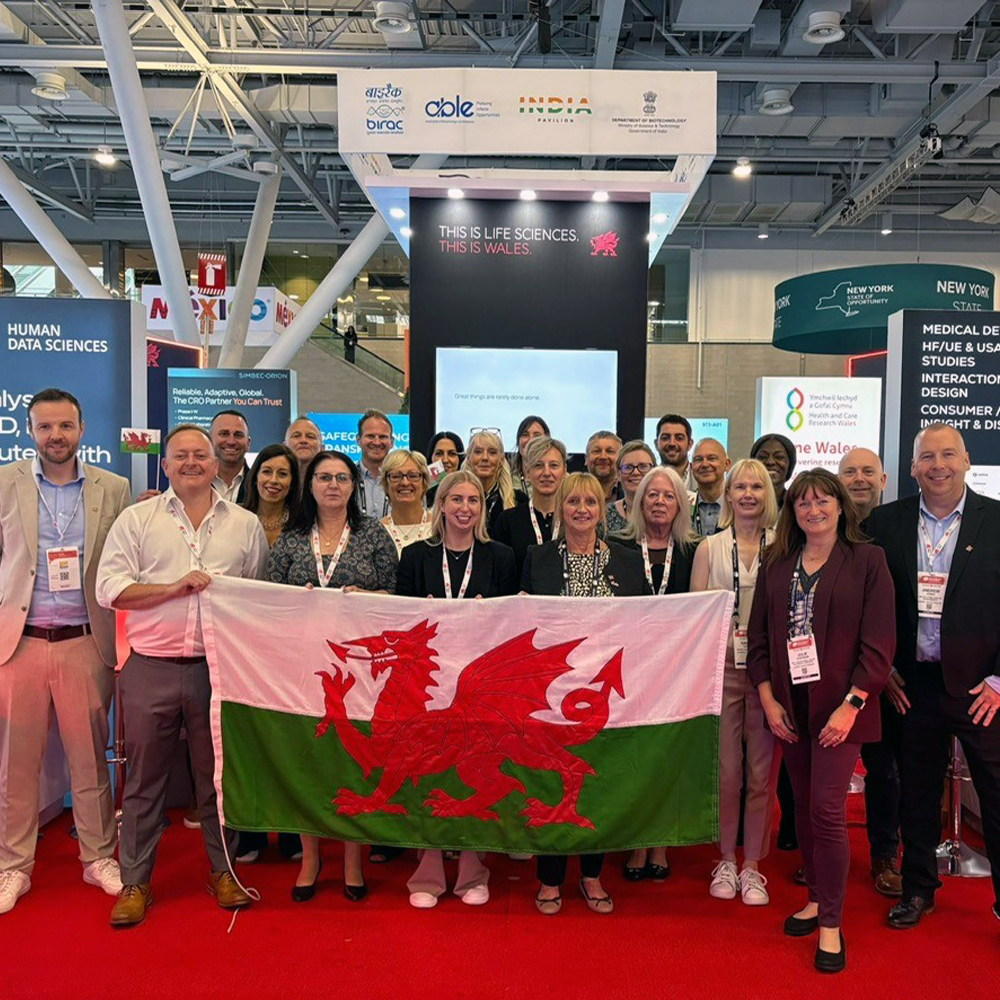
Looking Ahead
The emphasis on patient advocacy, especially in mental health, women’s health, and vaccine confidence, points to the growing need for co‑design approaches that validate accessibility, ethics, and lived experience.
At the same time, the rise of storytelling-led brand building creates new opportunities for companies like PDR to build on this user-centred platform—crafting more narrative-rich communications, empathy-driven interfaces, and design systems that convey both purpose and impact.
As biotech continues to evolve, we believe design has a vital role to play—not just in shaping products, but in shaping the stories, systems, and experiences that bring them to life.

